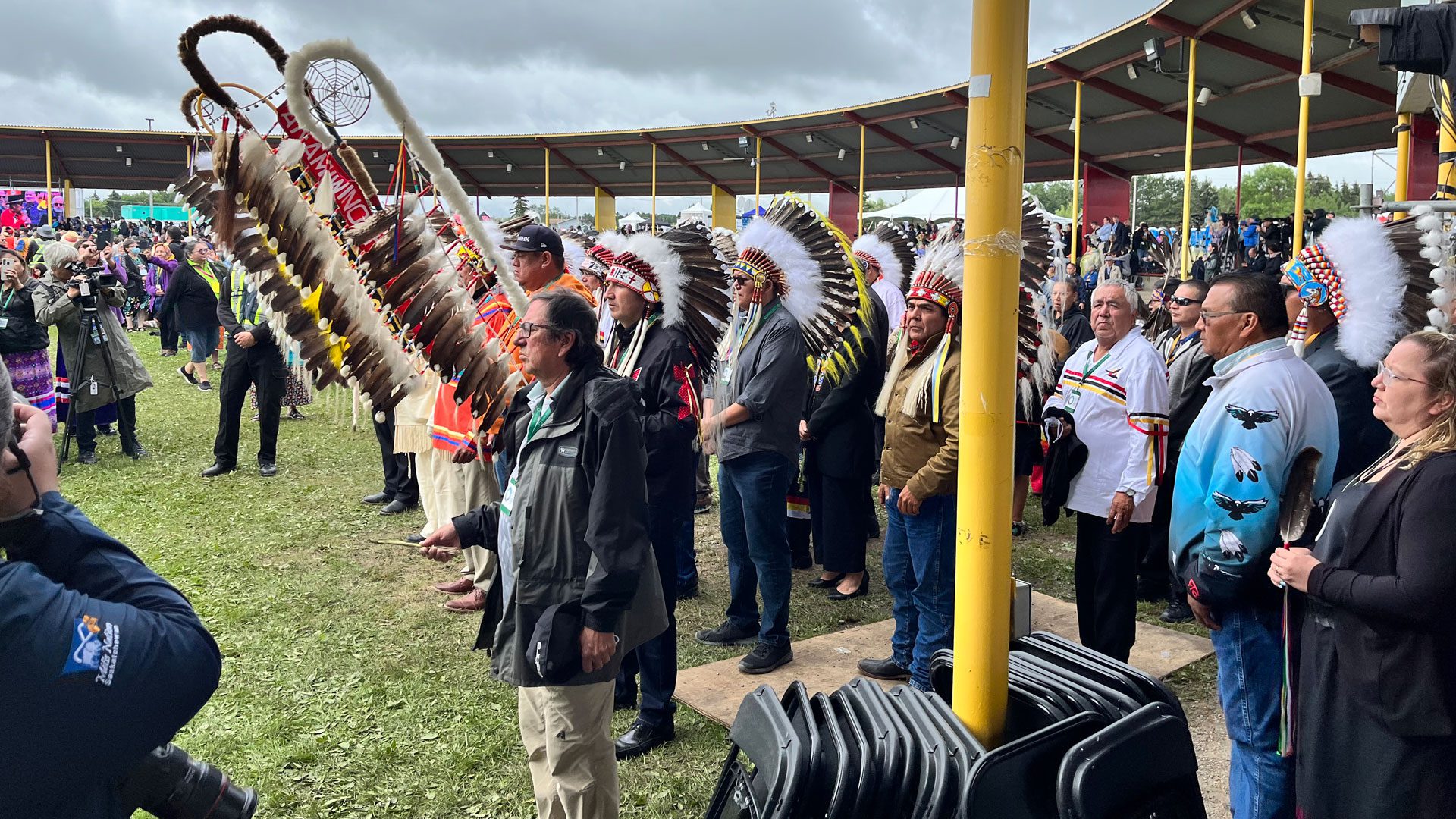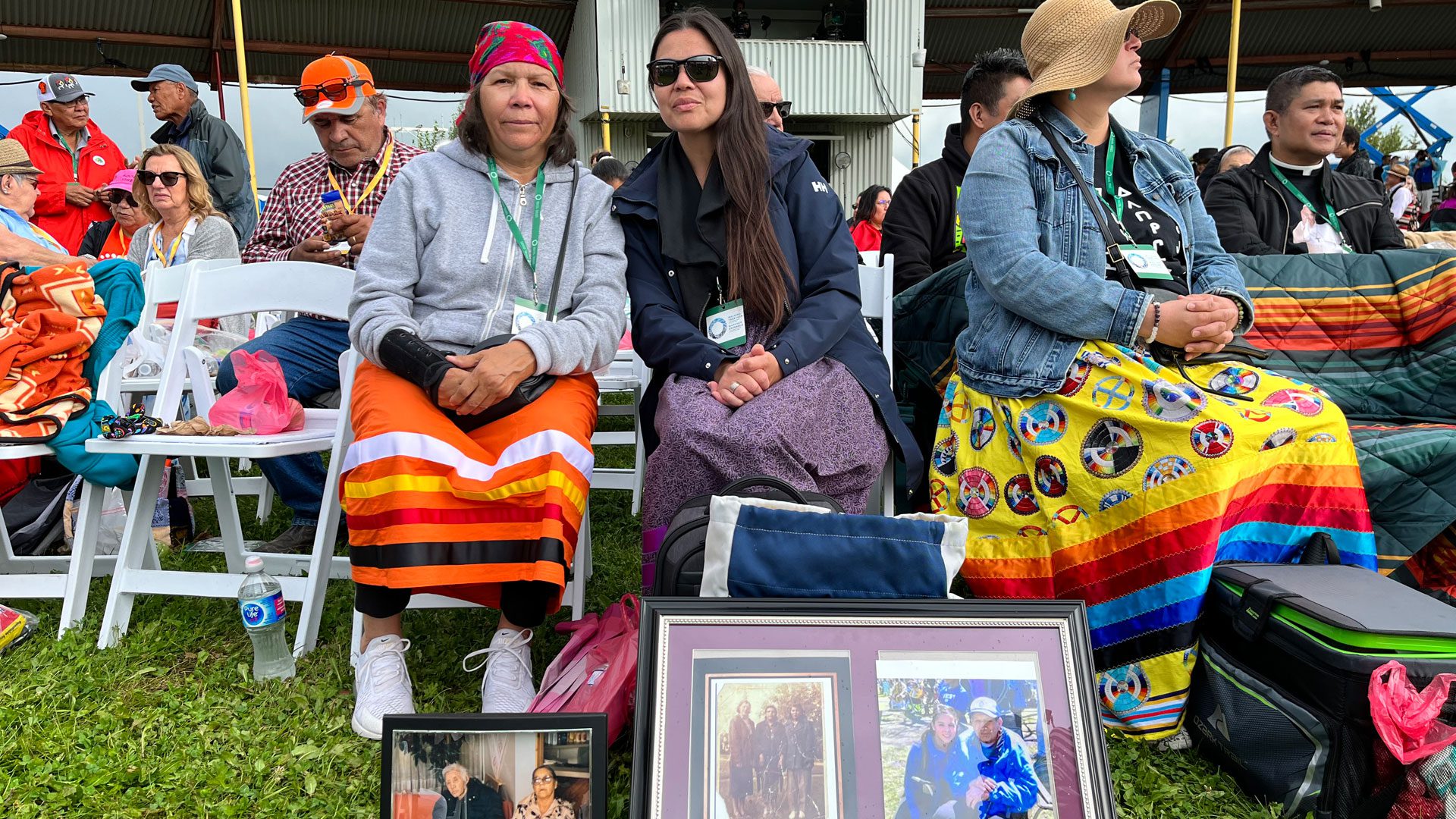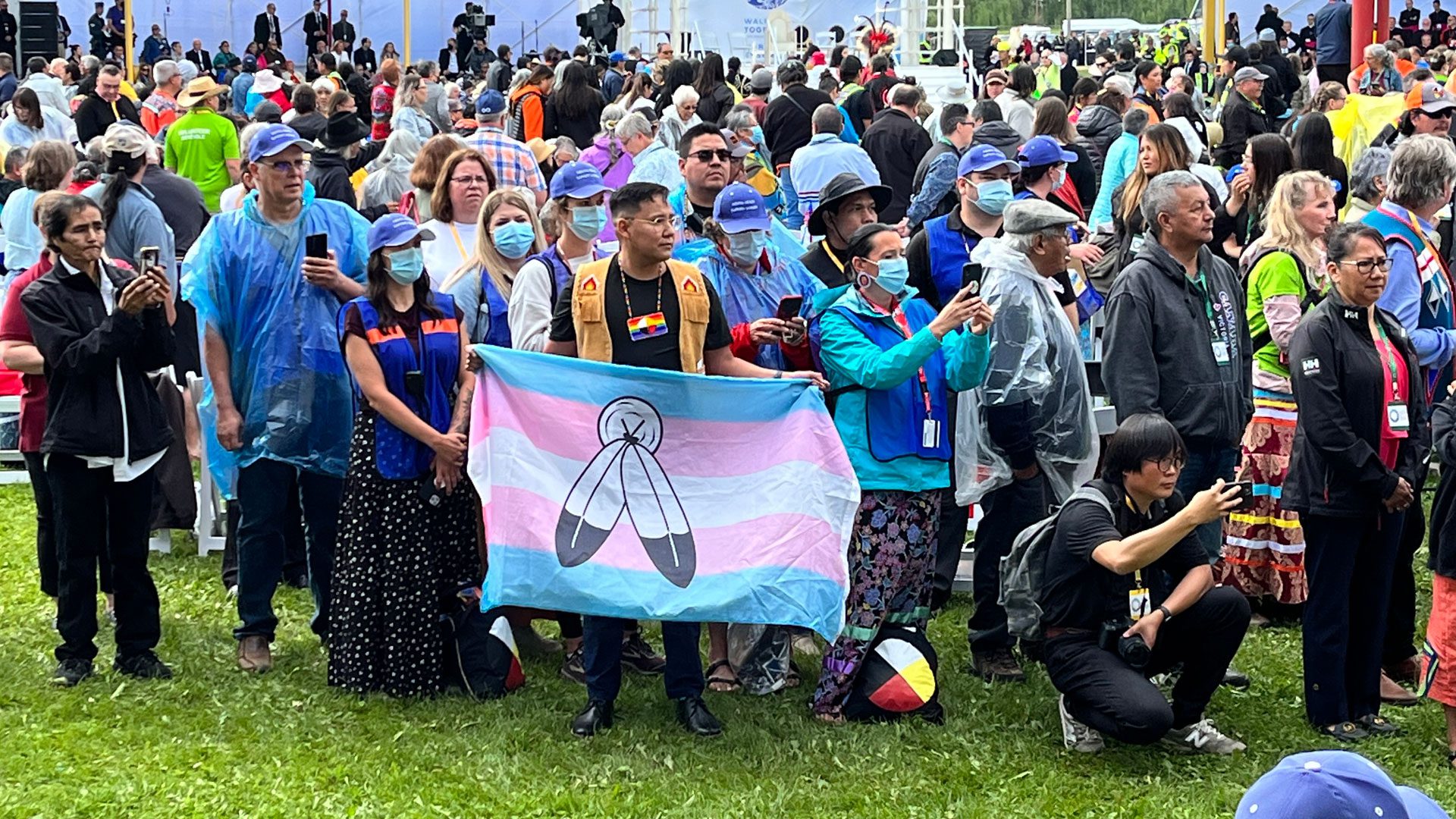When you hear the stories of survivors, some of them are difficult to hold. Brian Buffalo says he was assaulted as a child in Grade 3. He also watched some of his fellow classmates be abused.
“I got thrown into residential schools and nuns were molesting boys, myself included,” Buffalo said. “They strapped me and told me not to tell anybody. Then they came to my class every year after that and pointed me out to say ‘he’s a liar and a troublemaker.’
“I am here to see the Pope and hear the apology. Abusers can say ‘I am sorry’ all that want but it is nothing if affirmative action is not taking place. We are taking steps toward healing, so I am glad.”
There are many stories like that in Maskwacis for the first formal event on Pope Francis’ journey.
Both excitement and trepidation hung in the air. Some people laughed and visited with friends and family while others sat silently, looking troubled.

Formerly known as Hobbema, the territory is made up of Louis Bull, Montana, Samson and Ermineskin First Nations.
Approximately 2,000 guests, almost all Survivors of residential or day schools, along with elders, knowledge keepers and those accompanying them.
The event began with a trip to the cemetery grounds where the Pope sat in a moment of reflection.
People are at the event for all sorts of reasons.
“My mother went to Pine Tree residential school and my aunties went to Sandy Bay and my uncles went to Assiniboine in Winnipeg and his children went to Pine Creek,” said Eileen Clearsky.

She is sitting in the Maskwa arbor with pictures of family in front of her.
“We never went to residential school but we suffered the legacy of that experience,” she said speaking about her family.
Both her parents were devoted Catholics so Clearsky said she came to the Papal visit for them.
“It’s been hard,” she said. “It was a last-minute choice I wasn’t going to come but I owe it to them to honour them. We carry a legacy that is so deep with hate and we have to come away from it and try to heal from the past.”
Clearsky is an educator, and she teaches her students about healing from trauma.
The ceremony opened with a grand entrance from the chiefs of Treaty 6. The current chiefs entered from the east and the former chiefs entered from the south.

Jack Saddleback wore a medallion featuring a rainbow and a medicine wheel.
He held a Two-Spirit flag towards the chiefs as the grand entry began.
“For me, it is important to be here,” said Saddleback. “I’ve had a lot of complex emotions about actually attending because we need to be able to have the lived history. The one that got systematically attacked by this Catholic church system.
“Prior to colonization we had an understanding of gender diversity and we understood that people are people— however they are born.”
Saddleback is there supporting some of his grandparents who went through residential school.
Volunteers walk around offering tissues and a man walks around with a braid of sweetgrass offering smudge.
Read More:
Road to Truth: The Pope’s Visit
The apology was spoken in Spanish by the Pope and translated into English, and several Indigenous languages for those following online.
There was applause when the pontiff apologized for the church’s role in residential schools.
“I am deeply sorry. Sorry for the ways in which, regrettably, many Christians supported the colonizing mentality of the powers that oppressed Indigenous peoples,” said Pope Francis.
After the apology, a procession of survivors and leaders went up on the stage to greet the Pope.
Wilton Littlechild gave Pope Francis a bonnet, a headdress to honour him as an honourary chief in the community.
Elder Jon Crier from Samson Cree Nation explains that is an honour for the work that he was doing and it is welcoming Pope Francis into their tribe.
It was Littlechild’s own headdress, according to a Facebook post by his grandson, Keeshon Littlechild. This was met with mixed responses from the community.
The reaction
After the speech, a woman, crying sang a free song that sounded like ‘Oh Canada” to those in attendance. She sang with tears running down her cheeks.
According to Chief Randy Ermineskin from Ermineskin First Nation, she tried to send a message on behalf of those who didn’t make it, “because no one else would have said it, she tried to send that message,” said Ermineskin at a press conference after the event.
Ermineskin said, “it was said that the Pope made an apology but he didn’t bring a chequebook to make things right.” He hoped this sent a clear message to the government that they still have a role to play in reconciliation.
Ermineskin would like to see the family members who didn’t live to see the apology or have never shared their stories remembered.
“Today, he gets to speak his language, where I do not get to speak mine,” said Chief George Desjarlais from Frog Lake Cree Nation in northern Alberta referencing the stories of survivors who were forbidden to speak in their own Indigenous language in residential schools.
He said that the Pope’s apology was sincere but that there is still much more work to be done.
“I’ve waited 50 years for this apology then finally today I have heard it,” said Evelyn Korkmaz a survivor of St. Anne’s residential school in northern Ontario.
“Today I heard an apology, I was hoping to hear some kind of work plan to how he is going to reconcile because reconciliation means different things to different people.”
St. Anne’s had an electric chair that was used for corporal punishment. Korkmaz has spoken to the United Nations to advocate for First Nations rights.
“There was no mention of releasing the documents we desperately need across Canada,” said Korkmaz about the church records identifying burial sites or residential school children.
“They don’t belong to Rome, they should be here,” she said.
These schools are crime scenes said Desjarlais, “there should be an investigation. It is genocide in the land of milk and honey.
“When something is wrong somewhere in the world we are the first ones there but we don’t take care of our own backyard.”










